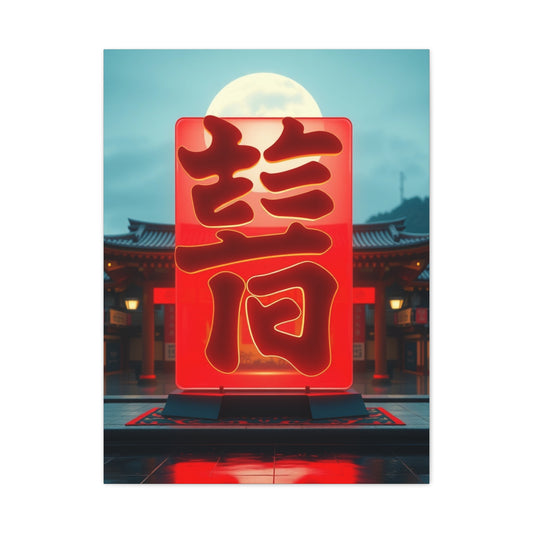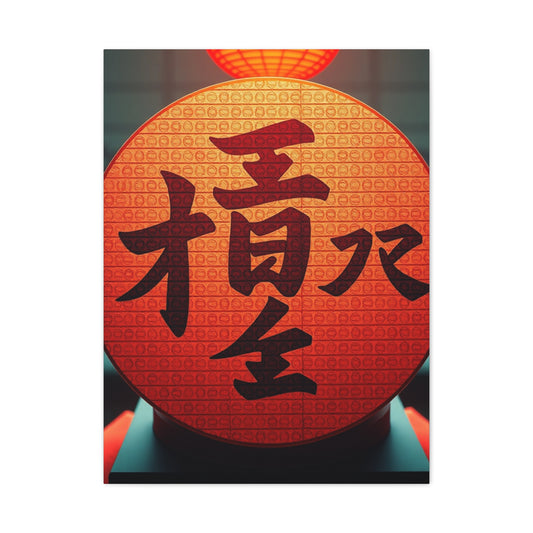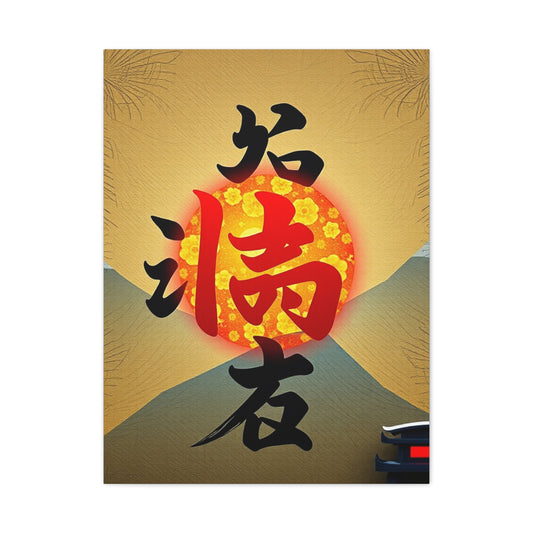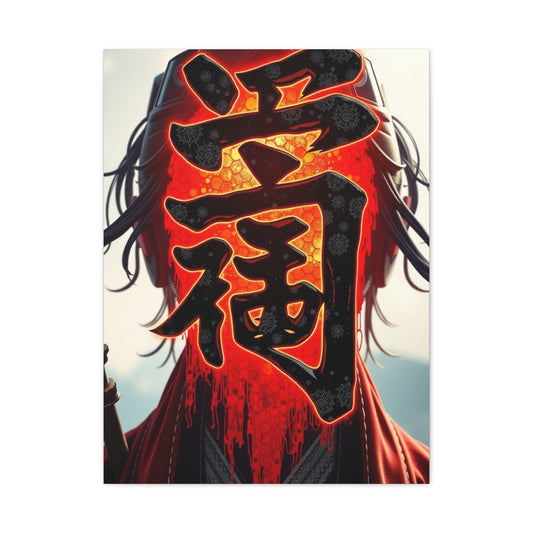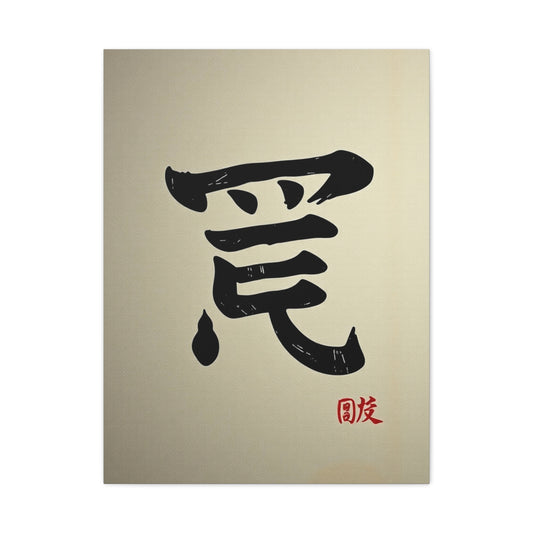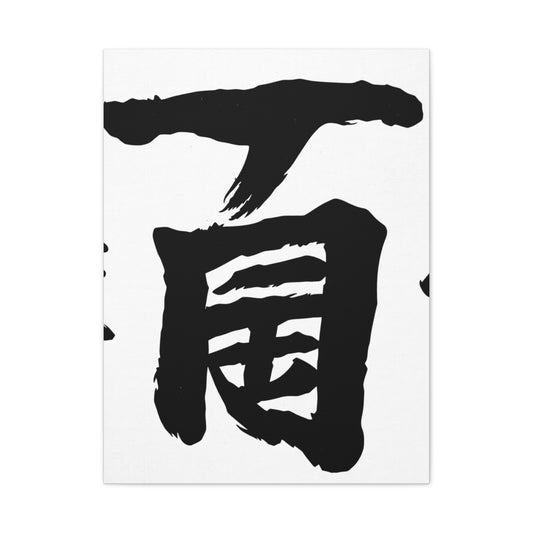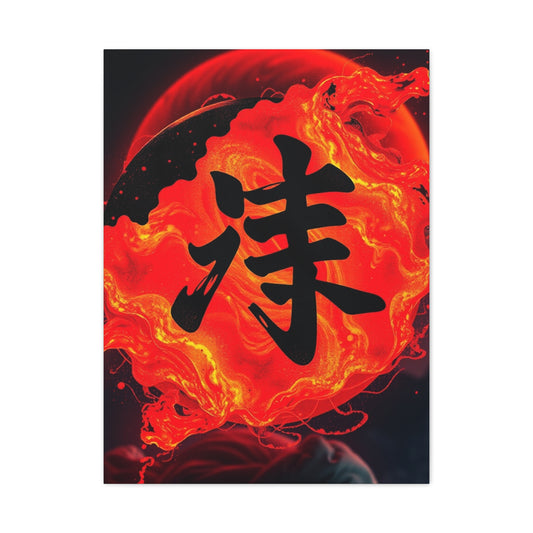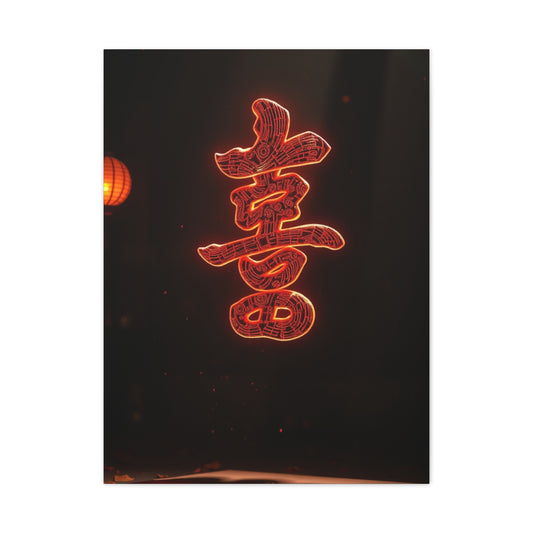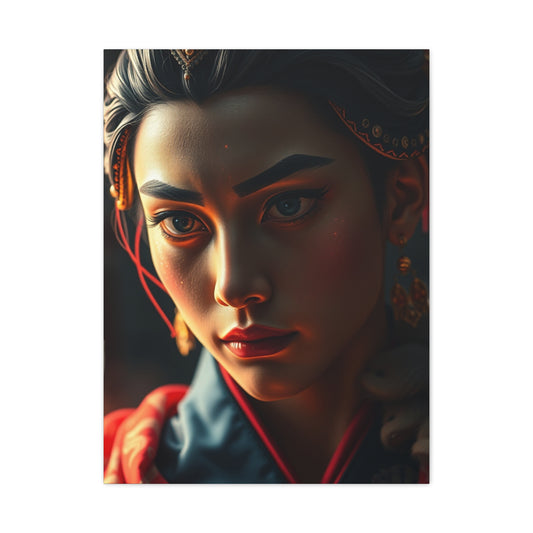Understanding the Revolutionary World of Konji Wall Art
Konji represents a groundbreaking movement in contemporary interior design, offering an extensive collection of wall art that transcends traditional boundaries. This comprehensive exploration delves into the multifaceted world of Konji's artistic offerings, examining how these pieces revolutionize modern living spaces through innovative design principles and cutting-edge visual aesthetics.
The emergence of Konji as a prominent force in wall décor stems from its commitment to pushing creative boundaries while maintaining accessibility for diverse interior design preferences. Each piece within the collection demonstrates meticulous attention to detail, combining sophisticated artistic vision with practical considerations for modern homeowners and commercial spaces.
Contemporary interior design increasingly demands versatile artistic solutions that complement various architectural styles while serving as focal points for visual interest. Konji's collection addresses these demands through carefully curated designs that balance aesthetic appeal with functional versatility, creating opportunities for transformative interior experiences.
The significance of wall art in modern interior design cannot be overstated, as these pieces serve multiple functions beyond mere decoration. They establish atmospheric moods, define spatial relationships, create visual hierarchy, and contribute to the overall narrative of living spaces. Konji's approach to this responsibility involves developing pieces that engage viewers on multiple sensory levels while maintaining timeless appeal.
Quality craftsmanship remains paramount in Konji's production process, ensuring that each piece meets exacting standards for color accuracy, material durability, and dimensional precision. This commitment to excellence extends throughout the entire product lifecycle, from initial concept development through final installation in customer spaces.
The diverse range of styles within the Konji collection enables customization opportunities that cater to individual preferences while maintaining cohesive design integrity. Whether seeking bold statement pieces or subtle complementary accents, customers discover options that align with their specific vision for interior transformation.
Behind Konji Urban Abstract Wall Art
Urban abstract expression represents one of the most dynamic categories within the Konji collection, drawing inspiration from metropolitan environments while interpreting these influences through contemporary artistic lenses. These pieces capture the essence of city life through abstract forms that evoke movement, energy, and the complex interplay of urban elements.
The development process for urban abstract pieces involves extensive research into metropolitan aesthetics, including architectural forms, traffic patterns, crowd dynamics, and the interplay of natural and artificial lighting in city environments. This research translates into visual compositions that communicate the vibrancy and complexity of urban experiences without literal representation.
Color palettes within the urban abstract collection reflect the sophisticated understanding of how metropolitan environments influence emotional responses. Deep charcoals and concrete grays provide foundational elements, while vibrant accent colors represent the energy and diversity found within city landscapes. These combinations create visual tension that mirrors the excitement and dynamism of urban living.
Compositional structures in urban abstract pieces employ layering strategies that suggest depth and movement, mimicking the way city environments reveal themselves through multiple levels of visual information. These layers interact to create viewing experiences that change based on lighting conditions and viewing angles, adding dimensional complexity to interior spaces.
The scale considerations for urban abstract pieces acknowledge the diverse spatial requirements of modern living environments. From intimate apartment settings to expansive commercial spaces, the collection includes size variations that maintain visual impact while respecting proportional relationships within different architectural contexts.
Texture plays a crucial role in urban abstract compositions, with printing processes that emphasize surface variations and dimensional qualities. These textural elements add tactile interest while creating subtle shadow patterns that enhance the overall visual complexity of each piece.
Installation considerations for urban abstract pieces involve careful attention to lighting conditions and surrounding décor elements. The collection's versatility allows for successful integration with various interior design styles, from industrial loft aesthetics to contemporary minimalist approaches.
Exploring Futuristic Canvas Prints by Konji
The realm of futuristic design within the Konji collection pushes creative boundaries through imaginative interpretations of tomorrow's visual landscape. These pieces combine speculative design elements with contemporary production methods, creating wall art that feels both forward-thinking and immediately relevant to current interior design trends.
Conceptual development for futuristic pieces involves examining emerging design movements, advances in digital visualization, and cultural predictions about future aesthetic preferences. This research informs compositions that feel genuinely innovative while maintaining visual coherence with existing interior design frameworks.
The color science behind futuristic pieces incorporates advanced understanding of how emerging lighting systems and display technologies influence color perception. Metallic accents and iridescent elements create dynamic visual effects that change throughout the day, adding temporal variation to static wall installations.
Geometric precision characterizes many futuristic compositions, with mathematical relationships that create visual harmony while suggesting technological sophistication. These geometric elements often incorporate patterns inspired by digital interfaces, architectural innovations, and scientific visualization methods.
Material considerations for futuristic pieces extend beyond traditional canvas applications, incorporating specialized printing substrates that enhance metallic elements and create unique surface interactions with ambient lighting. These material choices contribute to the overall futuristic aesthetic while maintaining practical durability for long-term installation.
The integration of futuristic pieces within existing interior spaces requires thoughtful consideration of lighting design and complementary décor elements. These pieces often serve as catalysts for broader interior design updates, inspiring homeowners to incorporate additional contemporary elements that support the futuristic aesthetic.
Scale variations within the futuristic collection accommodate different spatial requirements while maintaining the visual impact essential to this design category. Large-format pieces create dramatic focal points, while smaller compositions provide subtle accents that contribute to cohesive futuristic themes throughout interior spaces.
Timeless Appeal of Konji Black & White Wall Décor
Monochromatic design represents one of the most enduring approaches to visual composition, and Konji's black and white collection demonstrates sophisticated understanding of this timeless aesthetic. These pieces leverage the power of contrast and tonal variation to create compelling visual experiences that complement virtually any interior design approach.
The artistic heritage of monochromatic composition extends back centuries, with contemporary interpretations building upon established principles while incorporating modern production methods and materials. Konji's approach to this tradition involves careful study of historical precedents combined with innovative contemporary interpretations.
Contrast management in black and white pieces requires precise control over tonal relationships and edge definitions. The collection employs advanced printing processes that maintain detailed gradations while ensuring crisp contrast transitions that create visual drama and dimensional depth.
Compositional strategies for monochromatic pieces often emphasize form, texture, and spatial relationships rather than relying on color variation for visual interest. This constraint encourages innovative approaches to visual hierarchy and focal point development, resulting in pieces that demonstrate sophisticated understanding of fundamental design principles.
The versatility of black and white décor extends beyond aesthetic considerations to practical advantages in interior design coordination. These pieces integrate seamlessly with existing color schemes while providing opportunities for future design evolution without requiring complete décor replacement.
Surface treatment variations within the black and white collection include matte finishes that emphasize tonal subtleties and gloss applications that enhance contrast relationships. These finish options allow for customization based on specific lighting conditions and intended visual effects within particular spaces.
The psychological impact of monochromatic design involves associations with sophistication, timelessness, and artistic refinement. Black and white pieces often serve as anchor points for interior design schemes, providing stable visual elements around which other décor components can be organized.
Installation considerations for black and white pieces involve careful attention to lighting design and wall color relationships. These pieces often benefit from dedicated lighting that emphasizes their tonal variations while creating subtle shadow effects that enhance dimensional qualities.
Dynamic Motion Wall Art by Konji: Capturing Energy in Static Form
The challenge of representing movement within static visual compositions drives the innovative approach found in Konji's dynamic motion collection. These pieces employ sophisticated visual strategies to create the illusion of movement and energy, transforming wall spaces into dynamic focal points that energize entire interior environments.
Movement representation in static art involves understanding principles of visual perception and employing compositional devices that suggest motion through carefully orchestrated visual elements. The collection utilizes flowing lines, directional patterns, and rhythmic repetition to create viewing experiences that feel kinetically charged.
Color dynamics within motion-inspired pieces often employ gradient transitions and strategic color placement to enhance the sense of movement and energy. Warm colors advance while cool colors recede, creating depth relationships that contribute to overall kinetic impressions within the compositions.
The study of actual motion patterns informs the development of dynamic compositions, with research into natural phenomena like wind patterns, water flow, and particle movement translating into abstract visual interpretations. These natural references ensure that artificial movement suggestions feel authentic and engaging.
Scale considerations for dynamic motion pieces involve understanding how movement illusions change based on viewing distance and perspective. The collection includes variations optimized for different spatial contexts, ensuring that kinetic effects remain compelling regardless of installation location.
Directional emphasis within motion compositions requires careful consideration of how these pieces interact with existing architectural elements and traffic flow patterns within interior spaces. Strategic placement enhances the movement illusions while complementing the functional aspects of room design.
The production process for dynamic motion pieces involves specialized printing methods that preserve the subtle color transitions and linear precision essential to movement illusions. Quality control measures ensure that kinetic effects translate successfully from digital designs to physical installations.
Lighting interaction with dynamic motion pieces creates additional opportunities for enhanced movement illusions, with strategic illumination revealing different aspects of the compositions throughout the day. This temporal variation adds another layer of interest to these already engaging pieces.
Delving into Konji Surreal Canvas Prints
Surrealism within the Konji collection represents an exploration of imaginative possibilities that challenge conventional perception while creating conversation-starting focal points for interior spaces. These pieces draw inspiration from the rich tradition of surrealist art while incorporating contemporary design sensibilities and production methods.
The development of surreal compositions involves balancing familiar elements with unexpected juxtapositions that create compelling visual narratives. Each piece tells a story through visual metaphor and symbolic representation, encouraging viewers to engage in interpretive exploration while enjoying immediate aesthetic appeal.
Color psychology plays a crucial role in surreal compositions, with palette choices that enhance the dreamlike qualities essential to this artistic approach. Unexpected color combinations create visual tension while maintaining overall compositional harmony, resulting in pieces that feel both fantastical and sophisticated.
Symbolic elements within surreal pieces draw from diverse cultural references and universal human experiences, creating compositions that resonate across different backgrounds while maintaining individual interpretive possibilities. This approach ensures broad appeal while preserving the personal connection essential to meaningful art experiences.
The technical execution of surreal compositions requires precise control over visual elements and their relationships, with production processes that preserve the subtle details and color accuracy essential to effective surreal expression. Advanced printing methods ensure that imaginative concepts translate successfully into physical installations.
Scale variations within the surreal collection accommodate different spatial requirements while maintaining the visual impact essential to this artistic category. Large-format pieces create immersive experiences that transport viewers into imaginative realms, while smaller compositions provide intriguing accents that spark curiosity and conversation.
The integration of surreal pieces within interior design schemes requires consideration of their strong visual personalities and potential to dominate spatial attention. Strategic placement allows these pieces to serve as artistic centerpieces while maintaining balance with other décor elements.
Viewer engagement with surreal compositions often evolves over time, with repeated viewing revealing new details and interpretive possibilities. This quality ensures long-term satisfaction and continued interest, making surreal pieces valuable investments for interior design projects.
Konji Minimalist Geometric Wall Art
Minimalist geometric design represents a sophisticated approach to visual composition that emphasizes precision, balance, and the powerful impact of restrained artistic expression. Konji's geometric collection demonstrates mastery of these principles while creating pieces that enhance interior spaces through clean, purposeful design.
The philosophy behind minimalist geometric design involves understanding that visual impact often increases through the elimination of unnecessary elements rather than their addition. Each line, shape, and color choice serves a specific compositional purpose, with nothing included arbitrarily or without consideration for overall design integrity.
Mathematical relationships inform many geometric compositions, with proportional systems that create visual harmony through precise numerical relationships. These mathematical foundations ensure that pieces feel balanced and satisfying to view, even when their underlying structural principles remain subconscious to casual viewers.
Color limitation within minimalist geometric pieces requires careful selection of hues that maximize impact while maintaining the restrained aesthetic essential to this approach. Often employing limited palettes of two to four colors, these pieces demonstrate how strategic color use can create sophisticated visual effects without overwhelming complexity.
Shape relationships within geometric compositions involve understanding how different forms interact to create visual tension, balance, and movement. The collection explores various geometric vocabularies, from simple circles and squares to complex polygonal arrangements that challenge conventional spatial perception.
Production precision becomes critically important for geometric pieces, as even minor alignment errors or color variations can compromise the overall visual effect. Advanced printing processes and quality control measures ensure that mathematical precision translates accurately from digital designs to physical installations.
The versatility of minimalist geometric design allows for successful integration with diverse interior design styles, from ultra-modern minimalist approaches to more traditional settings seeking contemporary accents. This adaptability makes geometric pieces valuable additions to various spatial contexts.
Installation considerations for geometric pieces often involve careful attention to wall preparation and alignment, as the precision of these compositions can highlight imperfections in mounting surfaces or installation execution. Professional installation often enhances the final visual impact of these mathematically precise pieces.
Vibrant Color Explosion Canvas by Konji
The exploration of vibrant color within the Konji collection represents a celebration of chromatic intensity and its power to transform interior environments through bold visual statements. These pieces embrace color as a primary expressive medium, creating compositions that energize spaces while demonstrating sophisticated understanding of color theory and visual harmony.
Color theory foundations inform the development of vibrant compositions, with careful attention to relationships between complementary, analogous, and triadic color combinations. These theoretical frameworks ensure that even the most intense color applications maintain visual coherence and aesthetic appeal.
The psychological impact of vibrant colors influences both the design process and the intended effects within interior spaces. Warm colors create feelings of energy and excitement, while cool vibrants suggest creativity and innovation. Strategic color placement within compositions guides emotional responses while maintaining visual balance.
Saturation management becomes crucial when working with intense colors, as improper handling can result in overwhelming or fatiguing visual experiences. The collection employs sophisticated approaches to saturation variation, creating compositions that feel energetic without becoming visually aggressive.
Production challenges for vibrant color pieces involve ensuring color accuracy and longevity through advanced printing processes and materials selection. UV-resistant inks and archival substrates preserve color intensity over time, maintaining the intended visual impact throughout the life of each installation.
The integration of vibrant color pieces within interior design schemes requires consideration of existing color palettes and lighting conditions. These pieces often serve as primary color sources for room design, with other elements chosen to complement rather than compete with their chromatic intensity.
Scale considerations for vibrant color pieces involve understanding how color intensity changes with viewing distance and piece dimensions. Large-format pieces create immersive color experiences, while smaller compositions provide concentrated bursts of chromatic energy that serve as accent elements.
Seasonal considerations influence how vibrant color pieces interact with changing light conditions throughout the year, with some compositions designed to complement specific seasonal moods while others maintain consistent impact regardless of external lighting variations.
Konji Patterned Wall Posters
Pattern design within the Konji collection explores the compelling nature of rhythmic visual repetition and its ability to create engaging wall installations that add texture and visual interest to interior spaces. These pieces demonstrate sophisticated understanding of pattern theory while offering diverse approaches to repetitive design.
The mathematical foundations of pattern design involve understanding how basic elements combine to create complex visual experiences through strategic repetition and variation. Konji's approach to pattern development incorporates both traditional pattern-making principles and contemporary interpretations that feel fresh and relevant.
Cultural influences within pattern design draw from diverse global traditions while avoiding appropriation through thoughtful abstraction and contemporary reinterpretation. This approach creates patterns that feel familiar yet innovative, appealing to broad audiences while respecting cultural heritage.
Scale relationships within patterned pieces require careful consideration of how repetitive elements change in visual impact based on viewing distance and installation size. The collection includes patterns optimized for various spatial contexts, from intimate residential settings to large commercial installations.
Color interaction within patterned designs involves understanding how repeated color relationships create overall visual effects that differ from single-color applications. Strategic color placement within repetitive structures can create secondary patterns and visual movements that enhance overall compositional complexity.
Production considerations for patterned pieces involve ensuring precise registration and color consistency across large format installations. Advanced printing processes maintain pattern integrity while preserving the subtle color variations that prevent repetitive designs from becoming monotonous.
The psychological effects of pattern exposure influence both design development and installation recommendations, with certain pattern types promoting relaxation while others stimulate energy and creativity. Understanding these effects enables strategic pattern selection for specific spatial functions and user needs.
Contemporary pattern interpretation within the Konji collection involves modernizing traditional pattern concepts through digital design methods and contemporary aesthetic sensibilities, creating pieces that honor pattern-making heritage while feeling thoroughly modern.
Abstract Nature-Inspired Konji Art
The intersection of natural inspiration and abstract interpretation creates compelling opportunities for wall art that connects interior spaces with the organic world while maintaining contemporary aesthetic relevance. Konji's nature-inspired collection demonstrates sophisticated approaches to translating natural phenomena into abstract visual compositions.
Biomimicry principles inform many nature-inspired pieces, with careful study of natural forms, growth patterns, and organic relationships translating into abstract visual elements that suggest natural origins without literal representation. This approach creates pieces that feel harmonious with human spatial preferences while offering artistic sophistication.
Seasonal variation within nature-inspired pieces acknowledges how natural environments change throughout the year, with some compositions designed to complement specific seasonal moods while others capture the timeless aspects of natural beauty that transcend temporal variation.
Organic color palettes draw from extensive observation of natural color relationships, incorporating the subtle variations and harmonic combinations found in natural environments. These palettes often include earth tones, sky colors, and the diverse greens found in plant life, combined in ways that feel both natural and artistically refined.
Form abstraction within nature-inspired pieces involves translating recognizable natural shapes into simplified visual elements that maintain essential characteristics while achieving artistic abstraction. This process requires understanding which aspects of natural forms create their most compelling visual qualities.
The emotional connection between humans and natural environments influences the development of nature-inspired pieces, with compositions designed to evoke the restorative and calming effects associated with natural settings. These pieces often serve as visual escapes within urban interior environments.
Production methods for nature-inspired pieces often emphasize organic textures and surface variations that enhance the natural aesthetic while maintaining the precision necessary for high-quality wall art. Specialized printing processes create subtle surface interactions that suggest natural materials and textures.
Contemporary interpretation of natural themes involves avoiding clichéd representations while capturing the essential qualities that make natural environments visually and emotionally compelling. This balance ensures that nature-inspired pieces feel fresh and relevant within modern interior design contexts.
Konji Digital Art Canvas Prints
Digital art within the Konji collection represents the convergence of technological innovation and artistic vision, creating pieces that could only exist through contemporary digital design methods while maintaining the aesthetic sophistication expected from fine art installations.
The digital design process enables unprecedented precision in color control, compositional adjustment, and detail refinement, allowing for artistic explorations that would be impossible through traditional media. This technological advantage translates into wall art pieces that demonstrate technical excellence alongside creative innovation.
Algorithmic influence within digital compositions introduces mathematical precision and pattern generation that creates visually complex results through systematic processes. These algorithmic elements often produce unexpected visual relationships that enhance overall compositional interest while maintaining design coherence.
Color accuracy in digital art reproduction requires advanced color management systems that ensure faithful translation from digital designs to physical prints. The collection employs professional-grade color profiles and calibrated printing processes to maintain the color integrity essential to digital art appreciation.
Resolution considerations for digital art pieces involve optimizing image quality for various print sizes while maintaining the crisp detail and smooth gradations that characterize high-quality digital compositions. Advanced scaling algorithms preserve image quality across different dimensional requirements.
The aesthetic possibilities unique to digital creation include seamless blending, perfect geometric precision, and complex layering effects that demonstrate the creative potential of digital design tools. These capabilities enable artistic expressions that feel distinctly contemporary while maintaining timeless visual appeal.
Contemporary digital art movements influence the development of Konji's digital collection, with awareness of current trends and emerging aesthetic directions ensuring that pieces feel current and relevant to contemporary artistic discourse while maintaining individual design integrity.
File format optimization for print production involves balancing image quality with practical production requirements, ensuring that digital files translate successfully into physical installations while preserving the visual characteristics that make digital art compelling.
Konji Experimental Wall Art
Experimental art within the Konji collection represents the most adventurous aspects of contemporary wall décor, featuring pieces that challenge conventional aesthetic assumptions while creating unique opportunities for interior transformation. These works demonstrate the creative possibilities that emerge when traditional boundaries are questioned and redefined.
The conceptual framework for experimental pieces involves systematic exploration of unconventional design approaches, material combinations, and visual strategies that haven't been fully explored within traditional wall art contexts. This experimental mindset leads to discoveries that influence broader collection development.
Risk-taking within experimental design requires balancing creative innovation with practical considerations for interior installation and long-term appeal. The collection manages this balance through careful market research and aesthetic testing that ensures experimental pieces remain accessible to diverse audiences.
Material innovation within experimental pieces often involves combining traditional printing substrates with unconventional surface treatments, special inks, or dimensional elements that create unique viewing experiences. These material explorations push the boundaries of what's possible within wall art production.
Visual surprise serves as a guiding principle for experimental pieces, with compositions designed to exceed viewer expectations while maintaining aesthetic coherence. This approach often involves subverting familiar visual elements or combining unexpected design influences in compelling ways.
The audience for experimental pieces typically includes design-forward consumers who appreciate artistic innovation and aren't afraid to make bold interior design statements. Understanding this audience enables the development of pieces that satisfy their desire for unique and conversation-starting wall installations.
Production challenges for experimental pieces often require custom solutions and specialized processes that may not be applicable to mainstream collection items. This willingness to invest in unique production approaches enables truly innovative results that distinguish experimental pieces from conventional wall art options.
Contemporary art movements influence experimental piece development, with awareness of current artistic discourse and emerging creative trends ensuring that experimental works contribute meaningfully to ongoing conversations about the future of visual art and interior design.
Large-Scale Abstract Konji Canvas
Large-format wall art presents unique opportunities and challenges for both artistic expression and interior design integration. Konji's large-scale abstract collection demonstrates sophisticated understanding of how scale affects visual impact while maintaining the design sophistication necessary for successful monumental installations.
The visual psychology of large-scale art involves understanding how increased dimensions amplify emotional impact and create immersive viewing experiences that smaller pieces cannot achieve. These effects require compositional adjustments that account for changed viewing relationships and spatial interactions.
Architectural integration becomes crucial for large-scale pieces, with designs that complement rather than compete with existing architectural elements while maintaining sufficient visual strength to justify their dominant spatial presence. This balance requires careful consideration of proportion, color, and compositional density.
Production challenges for large-format pieces involve maintaining image quality and color consistency across expansive printing areas while ensuring dimensional stability and installation reliability. Advanced printing equipment and specialized mounting systems address these technical requirements.
Transportation and installation logistics for large-scale pieces require specialized handling procedures and professional installation services that ensure safe delivery and proper mounting. These considerations influence both packaging design and customer service support for large-format orders.
Viewing distance optimization within large-scale compositions involves understanding how visual elements appear differently when viewed from various distances, with designs that maintain interest and clarity across the range of typical viewing positions within interior spaces.
Cost considerations for large-scale pieces reflect the increased material and production requirements while maintaining accessibility for customers seeking impactful wall art solutions. Value engineering ensures that large-format pieces provide exceptional visual impact relative to their investment requirements.
Contemporary interior design trends increasingly favor statement pieces that create focal points and define spatial character, making large-scale abstract art particularly relevant to current design preferences and lifestyle trends.
Bold Line Art by Konji: The Power of Linear Expression
Linear expression within the Konji collection demonstrates the compelling visual impact achievable through strategic use of line as a primary design element. These pieces explore how lines create movement, define space, and establish visual hierarchy while maintaining the aesthetic sophistication expected from contemporary wall art.
Line quality variations within the collection include everything from precise geometric lines to organic flowing curves, each serving different compositional purposes and creating distinct emotional responses. Understanding these line characteristics enables strategic selection for specific interior design objectives.
Compositional structure in line-based pieces often employs principles borrowed from architectural drawing and graphic design, with systematic approaches to line weight, spacing, and directional relationships that create sophisticated visual hierarchies and movement patterns.
The intersection of lines creates focal points and visual tension that guides viewer attention while establishing compositional balance. These intersection points often serve as organizational centers around which entire compositions develop, demonstrating the structural importance of linear relationships.
Cultural influences within linear art draw from diverse traditions including calligraphy, architectural drawing, and indigenous art forms, with contemporary interpretations that honor these influences while creating distinctly modern visual expressions.
Production precision for line-based art requires advanced printing processes that maintain sharp edge definition and consistent line weight across various scales and substrate materials. Quality control measures ensure that linear elements reproduce accurately without degradation or distortion.
Monochromatic and limited color approaches often enhance the impact of line-based compositions by focusing attention on linear relationships rather than color interactions. This restraint demonstrates confidence in the power of line as a primary expressive medium.
Contemporary applications of linear art within interior design contexts involve understanding how line-based compositions interact with existing architectural elements, furniture design, and lighting conditions to create cohesive and compelling spatial experiences.
Konji Mixed Media Wall Posters: Combining Creative Mediums
Mixed media approaches within the Konji collection represent sophisticated exploration of how different artistic elements combine to create unified visual experiences that transcend the limitations of individual artistic mediums. These pieces demonstrate innovative thinking about artistic possibility and production methods.
The conceptual development of mixed media pieces involves understanding how different visual elements—photographic, illustrative, textural, and graphic—can work together to create compositions that leverage the strengths of each medium while achieving overall artistic coherence.
Layering strategies within mixed media compositions require careful consideration of how different elements interact visually and spatially, with techniques that create depth and visual interest while maintaining clarity and compositional focus. These layering approaches often mirror digital design processes while achieving unified final results.
Material compatibility considerations ensure that different media elements reproduce successfully within single printing processes, requiring technical expertise in color management, resolution optimization, and substrate selection that accommodates diverse visual elements.
Contemporary mixed media art movements influence the development of Konji's mixed media collection, with awareness of current artistic trends and emerging creative approaches ensuring that pieces feel relevant to contemporary artistic discourse while maintaining broad appeal for interior design applications.
The production complexity of mixed media pieces often requires specialized processes and quality control measures that ensure successful integration of diverse elements while maintaining the high standards expected from professional wall art installations.
Design coherence within mixed media pieces involves establishing unifying elements—such as color palettes, compositional structures, or thematic connections—that bind diverse visual elements into compelling unified experiences that feel intentional rather than arbitrary.
Installation considerations for mixed media pieces involve understanding how different elements within compositions interact with lighting conditions and viewing angles, with strategic placement recommendations that optimize the visual impact of complex artistic combinations.
Konji Contemporary Expression Canvas: Modern Artistic Language
Contemporary expression within the Konji collection represents engagement with current artistic discourse while creating pieces that speak to modern aesthetic sensibilities and lifestyle preferences. These works demonstrate awareness of contemporary art movements while maintaining accessibility for diverse interior design applications.
The definition of contemporary expression involves understanding current cultural contexts, emerging aesthetic trends, and evolving preferences for visual art within interior environments. This awareness ensures that contemporary pieces feel relevant and engaging to modern audiences while maintaining artistic integrity.
Cultural reflection within contemporary pieces acknowledges the diverse influences that shape modern artistic expression, incorporating global perspectives and cross-cultural references that create compositions appealing to increasingly diverse contemporary audiences.
Artistic innovation within contemporary expression involves building upon established artistic traditions while introducing new approaches, materials, or conceptual frameworks that advance artistic discourse and create fresh possibilities for wall art applications.
Color trends within contemporary art influence palette development, with awareness of current preferences for color relationships, saturation levels, and harmonic combinations that feel current and sophisticated. These trends inform design decisions while avoiding temporary fad-following that would limit long-term appeal.
Compositional strategies for contemporary pieces often incorporate asymmetrical balance, unexpected focal points, and non-traditional spatial relationships that reflect contemporary preferences for dynamic and engaging visual experiences over static decorative objects.
The market context for contemporary expression involves understanding how current lifestyle trends, housing preferences, and demographic shifts influence demand for specific types of wall art, ensuring that contemporary pieces address real market needs while maintaining artistic ambition.
Production innovation for contemporary pieces often involves exploring new printing methods, substrate materials, or finishing processes that enhance the contemporary aesthetic while meeting practical requirements for interior installation and long-term durability.
Urban Street-Inspired Konji Wall Art
Street art influences within the Konji collection represent sophisticated interpretation of urban artistic traditions while adapting these dynamic visual approaches for interior installation contexts. These pieces capture the energy and immediacy of street art while meeting the quality and aesthetic standards required for residential and commercial interior design.
The cultural significance of street art movements informs the development of urban-inspired pieces, with respect for the social and artistic contexts that created these powerful visual traditions while adapting their aesthetic vocabulary for different applications and audiences.
Accessibility improvements translate street art aesthetics into formats appropriate for diverse interior settings, making the visual excitement of urban art available to audiences who appreciate its energy but require different scale, content, or installation characteristics for their specific spaces.
Color boldness within street-inspired pieces maintains the high-impact visual character essential to urban artistic traditions while employing sophisticated color relationships that ensure successful integration within interior design contexts. This balance preserves authenticity while expanding accessibility.
Compositional energy within urban-inspired pieces captures the dynamism and movement characteristic of street art while adapting these qualities for static wall installations. Strategic use of directional elements, layered compositions, and visual rhythm creates engaging viewing experiences.
Contemporary interpretation of street art traditions involves understanding both historical development and current evolution within urban artistic communities, ensuring that inspired pieces feel authentic and respectful while achieving independent artistic merit.
Production quality for street-inspired pieces requires processes that can reproduce the textural variety and color intensity characteristic of urban art while meeting professional standards for archival stability and color accuracy over time.
Installation versatility enables street-inspired pieces to enhance diverse interior settings, from urban loft spaces where their aesthetic origins feel natural to suburban environments where they provide energetic contrast to more conventional décor approaches.
Konji Gallery-Style Canvas Prints
Gallery-quality standards within the Konji collection ensure that residential and commercial installations achieve the same visual impact and longevity expected from museum and professional gallery displays. These pieces demonstrate commitment to artistic excellence while maintaining accessibility for diverse installation contexts.
The definition of gallery quality involves understanding professional standards for color accuracy, material stability, presentation format, and overall artistic merit that distinguish serious art installations from decorative objects. Meeting these standards requires investment in superior materials and production processes.
Archival considerations ensure that gallery-style pieces maintain their visual characteristics over extended periods, with fade resistance, dimensional stability, and surface durability that preserve artistic intent throughout decades of display. These qualities justify the investment required for premium wall art installations.
Presentation standards for gallery-style pieces include attention to mounting systems, edge finishing, and surface protection that enhance both visual impact and practical durability. Professional presentation elevates perceived value while ensuring successful long-term installation.
Color management systems for gallery-quality reproduction involve calibrated workflows that ensure faithful translation of artistic intent from original designs to final installations. This precision maintains artistic integrity while meeting professional standards for color accuracy.
Artistic merit within gallery-style pieces involves compositions that would be suitable for professional exhibition contexts, with conceptual depth, visual sophistication, and technical execution that distinguish these works from conventional decorative art options.
Authentication and documentation standards provide customers with information about artistic processes, material specifications, and care instructions that support long-term appreciation and proper maintenance of gallery-quality installations.
Investment value considerations recognize that gallery-quality pieces often appreciate over time while providing immediate aesthetic benefits, making them valuable additions to both residential and commercial art collections that serve dual decorative and investment functions.
Konji Futuristic Geometric Wall Décor: Tomorrow's Design Today
Geometric futurism within the Konji collection explores how mathematical precision and speculative design combine to create wall art that feels both contemporary and forward-looking. These pieces suggest tomorrow's aesthetic preferences while remaining relevant to current interior design trends and lifestyle preferences.
Speculative design principles inform the development of futuristic geometric pieces, with imagination about future aesthetic preferences, lifestyle changes, and technological influences guiding compositional decisions and visual strategies that feel genuinely innovative rather than merely trendy.
Precision manufacturing for geometric pieces requires advanced production methods that maintain mathematical accuracy while achieving the smooth surfaces and crisp edges essential to geometric aesthetic success. These production capabilities enable artistic visions that demand technical perfection.
Color innovation within futuristic geometric pieces often incorporates metallic elements, iridescent effects, and color combinations that suggest technological sophistication while maintaining visual appeal within current interior design contexts. These innovative color approaches create pieces that feel authentically futuristic.
Dimensional illusion within geometric compositions employs sophisticated understanding of perspective, shading, and spatial relationships to create pieces that appear three-dimensional despite their flat surface reality. These illusions add visual complexity and viewing interest that enhances long-term appreciation.
Modular design possibilities within geometric collections enable custom installation configurations that can adapt to various spatial requirements while maintaining design integrity. This flexibility makes futuristic geometric pieces valuable for diverse architectural contexts.
Installation lighting for futuristic geometric pieces often benefits from contemporary LED systems that can emphasize metallic elements and create dynamic shadow patterns that enhance the technological aesthetic while providing practical illumination for the surrounding space.
Future-proofing design decisions involves creating pieces that will remain visually relevant as design trends evolve, requiring understanding of fundamental aesthetic principles that transcend temporary fashion while incorporating genuinely innovative visual approaches.
Abstract Landscape Wall Art by Konji: Reimagining Natural Vistas
Landscape abstraction within the Konji collection transforms traditional landscape art through contemporary interpretive approaches that capture the essential emotional and visual qualities of natural environments while achieving artistic sophistication appropriate for modern interior contexts.
Compositional abstraction within landscape pieces involves identifying the fundamental visual elements that make landscapes compelling—such as horizon lines, atmospheric perspective, and natural color relationships—while translating these elements into abstract visual vocabularies that feel both familiar and innovative.
Atmospheric effects within abstract landscapes employ sophisticated color and tonal relationships that suggest natural lighting conditions, weather phenomena, and seasonal variations without literal representation. These atmospheric qualities create emotional connections with natural environments while maintaining artistic abstraction.
Scale translation from actual landscapes to wall art installations requires understanding how vast natural vistas can be effectively represented within interior spaces, with compositional strategies that maintain the sense of expansiveness and grandeur characteristic of compelling landscape experiences.
Seasonal interpretation within abstract landscape pieces acknowledges how natural environments change throughout the year, with some compositions designed to evoke specific seasonal moods while others capture timeless landscape qualities that transcend temporal variation.
Color harmony within landscape abstractions draws from extensive observation of natural color relationships, incorporating the subtle variations and complementary combinations found in actual landscapes while achieving the color sophistication expected from contemporary art installations.
Emotional resonance within abstract landscape pieces involves understanding the psychological connections between humans and natural environments, with compositions designed to evoke the restorative and inspiring effects associated with landscape appreciation while serving practical interior design functions.
Contemporary landscape interpretation within the collection avoids clichéd natural representations while capturing the essential qualities that make landscape experiences emotionally and visually compelling, ensuring that abstract pieces feel fresh and relevant within modern design contexts.
Conclusion:
In exploring the expansive world of Konji wall art, it becomes evident that this collection represents far more than decorative embellishment; it embodies a transformative approach to contemporary interior design. Konji’s diverse range of artistic expressions—from urban abstracts and futuristic canvases to minimalist geometric forms and surreal compositions—demonstrates a remarkable capacity to engage viewers while enhancing the functional and emotional dimensions of interior spaces. Each piece, meticulously conceived and executed, reflects a careful balance of aesthetic sophistication, technical precision, and contextual adaptability, ensuring relevance across a spectrum of design preferences and spatial environments.
One of the most compelling aspects of Konji wall art lies in its versatility. Urban abstract pieces capture the energy and complexity of city life, using layered compositions and dynamic color palettes to convey movement and vitality. Futuristic prints push the boundaries of imagination, integrating metallic finishes, geometric precision, and advanced material techniques to create forward-looking visual statements. Similarly, black and white, minimalist, and geometric collections leverage restraint and compositional discipline to create timeless pieces that complement diverse architectural styles, highlighting Konji’s sensitivity to both contemporary trends and enduring design principles.
Konji’s exploration of motion, surrealism, and vibrant color further illustrates the collection’s ability to evoke emotion, stimulate conversation, and engage the senses. Dynamic motion artworks translate energy into visual forms, while surreal canvases invite interpretive exploration, blending imagination with artistic sophistication. Vibrant color explosions transform interiors, energizing spaces and guiding emotional responses through nuanced applications of hue, saturation, and contrast. Nature-inspired and abstract landscape pieces provide balance, offering tranquility and visual connection to the organic world while maintaining modern aesthetic sensibilities.
Beyond aesthetic innovation, Konji demonstrates a commitment to quality, technical excellence, and thoughtful integration within interior environments. Each piece undergoes rigorous production processes that ensure color accuracy, material durability, and compositional integrity, while installation considerations—including scale, lighting, and spatial context—maximize visual impact. The collection’s modularity and adaptability facilitate seamless incorporation into varied residential, commercial, and gallery spaces, ensuring that each artwork serves as both a visual anchor and an expression of individual taste.
Ultimately, Konji wall art exemplifies the fusion of creativity, craftsmanship, and design intelligence. It transcends conventional notions of wall décor, offering pieces that are simultaneously visually striking, emotionally resonant, and contextually harmonious. For interior designers, homeowners, and art enthusiasts alike, Konji provides opportunities to redefine spaces, inspire dialogue, and create immersive experiences where art and environment coalesce. The collection stands as a testament to the transformative power of contemporary wall art—an enduring synthesis of imagination, precision, and aesthetic vision that continues to shape the evolving landscape of modern interior design.

